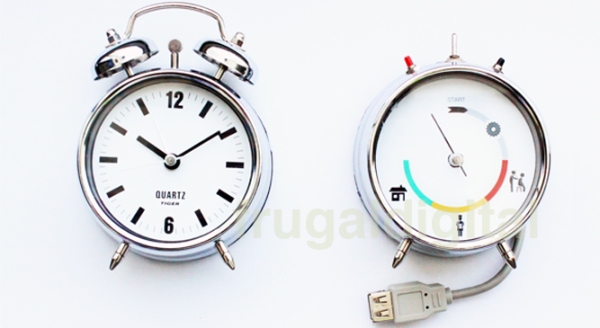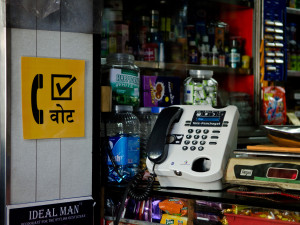Vinay Venkatraman’s Social Design Talk at the Victoria and Albert Museum provoked great excitement and great unease. The excitement came from hearing an account of design-led innovation for social impact that offered something distinctive in relation to current conversations about innovation and social impact. The unease came from wondering how many other designers, entrepreneurs, foundations, universities, companies or students are capable of working in the mode that Vinay and colleagues do.
One of the co-founders of Copenhagen Institute of Interaction Design, a start-up educational institution teaching and researching the design of interactive products and services, Vinay now works through his consultancy but continues to be involved with the Frugal Digital group he initiated at the institute. He began his talk by noting the challenge for contemporary design as creating holistic experiences and coping with systemic complexity. As he described three different kinds of projects, Vinay offered insights into a mode of design practice that is centrally concerned with making change happen, in part through an iterative studio practice of making (digital) devices and visualizations, that rests on an analysis of socio-cultural patterns and a political commitment to inclusion and access.
Describing the Frugal Digital team’s visit to Mumbai, Vinay said how they studied practices of salvaging computer parts by skilled local people who are not educated in formal terms. He described an informal but well-established set of processes by which unwanted CRT monitors are salvaged, and components are combined with TV tuner kits to create retrofitted TVs. These are then packaged up and transported on passenger buses to rural areas when there is room on them, and sold for around Euro 30. Alongside this, printed instruction manuals for “people who know how to fix things” are widely available for sale on market stalls, enabling what Vinay calls the “new technology crafts”.
Unlike the kinds of user research now common within design, often starting with micro-social analyses of users’ experiences, in contrast this research analyses the sociotechnical systems users’ practices are part of. It provides a powerful basis for reconfiguring resources based on an asset-based model of such systems, rather than one based on what product marketers call customer “needs”.
While this analysis of tinkering and fix-it culture is not unique, where the team’s work opens up possibilities is when they take this analysis of a culture and system, and respond through a studio practice that starts with what is readily available.
One project example started with noting the key roles of front-line healthcare workers who support families close to or in their homes, rather than in the public health centres that are typically 7-15km away. The team identified an opportunity to enable the healthcare workers to help patients decide if it is worth giving up a day’s wages, and investing in traveling to the health centre when someone is ill. The Frugal Digital team proposed a triage system to enable healthcare workers to help families make such decisions, thus playing changing the flow of patients to and load on the public health centres.
The proposed design builds on two resources: first, the fix-it locally culture and resources for cheap fabrication, and secondly, strong visual literacy among healthcare workers (even if reading and writing skills are less common). The Frugal Digital team’s design starts with the ubiquitous alarm clock. By adding sensors and a micro-controller, the team turned an everyday, low-tech object into a multi-functional digital tool that can be used within different kinds of health screening activity. For example adding different sensors turns the hacked alarm clock into a device for measuring things such as blood pressure or pulse rates. A further step is to add a USB port to it, and develop a simple SDK (software development kit) to allow other people to write and build code for the micro-controller inside and add new sensors. The dial was replaced with a simple graphic enabling healthcare workers to triage patients, to work out if they needed to travel to the health centre. As an intervention into a local health economy, the Medi-Meter is not classed as a “medical” device so manages to go under the radar in terms of institutional control.
This solution, then, rests on a socio-technical analysis that recognizes India’s fix-it culture and capabilities in simple electronic fabrication and adaptation, and combines this with a readily available device that is appropriated for different activities. Re-introduced back into this healthcare system, the device and the ways it becomes used change behaviours and the economics of rural healthcare.
Other examples from Vinay’s talk included the Tele-panchayat. This he described as piggybacking on the existing public telephone system in India. The team combined this with India’s new biometric ID system, to create a prototype of a public referendum system. As with the Medi-Meter device, the Frugal Digital team are mashing up different socio-technical systems, but here there is something different going on. By attempting to create a new collective behaviour of voting in referenda on local political questions (something that is not currently done in India, Vinay reported), here the Frugal Digital team are bringing a new kind of public into view, or at least trying to.
Summarising his talk with the idea that data is a raw material for the creative industries, Vinay noted a shift from design as being a market differentiator, to design as being a new market creator, to design as being a behaviour creator. Through the team’s research and material/digital prototyping, the Frugal Digital initiative is opening up new possibilities for design for social impact by working at the level of systems hacking and capability building, rather than designing user experiences.
In her response to Vinay’s talk, Corinna Gardner, Curator of Contemporary Product Design at the Victoria and Albert Museum, started off by commenting on the museum’s acquisition of one of the One Laptop Per Child laptops for its collection. ‘Is this an example of good design?’ she asked. Perhaps they should start documenting and collecting Frugal Digital’s projects right now.



Pingback: Where is the social in social design? | Mapping Social Design Research & Practice